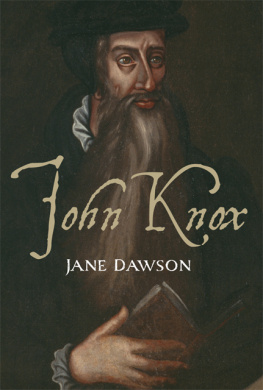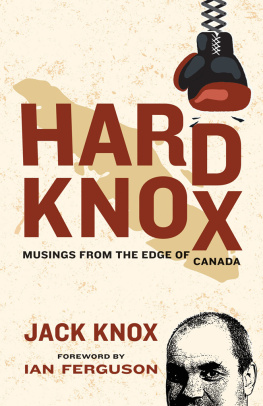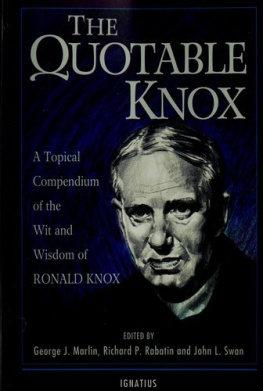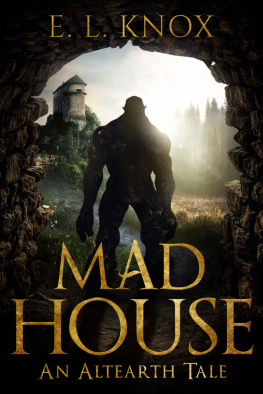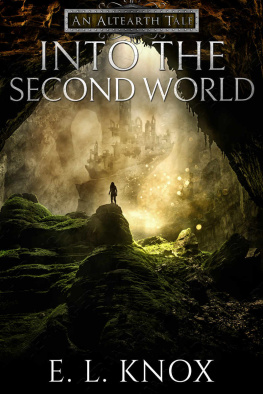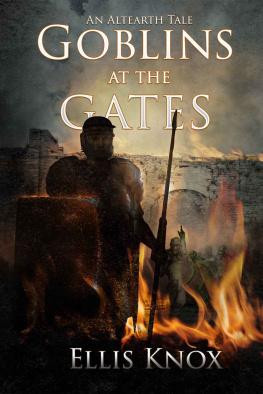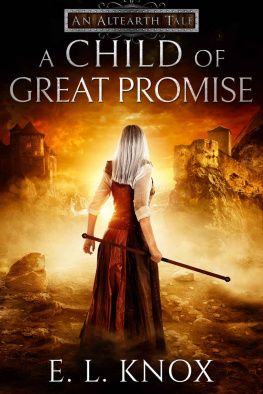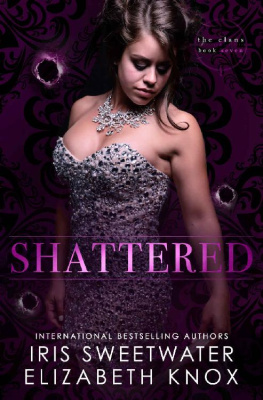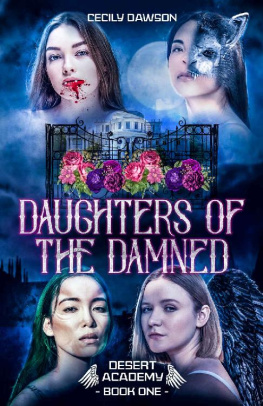

Published with assistance from the foundation established in memory of Oliver Baty Cunningham of the Class of 1917, Yale College.
Copyright 2015 Jane Dawson
All rights reserved. This book may not be reproduced in whole or in part, in any form (beyond that copying permitted by Sections 107 and 108 of the U.S. Copyright Law and except by reviewers for the public press) without written permission from the publishers.
For information about this and other Yale University Press publications, please contact:
U.S. Office:
Europe Office:
Typeset in Adobe Caslon Pro by IDSUK (DataConnection) Ltd
Printed in Great Britain by Gomer Press Ltd, Llandysul, Ceredigion, Wales
Library of Congress Cataloging-in-Publication Data
Dawson, Jane E. A.
John Knox / Jane Dawson.
pages cm
Includes bibliographical references and index.
ISBN 978-0-300-11473-7 (cl : alk. paper)
1. Knox, John, approximately 1514-1572. 2. PresbyteriansScotlandBiography. 3. TheologiansScotlandBiography. 4. ReformationScotland. 5. ScotlandChurch history16th century. I. Title.
BX9223.D39 2015
285.2092dc23
[B]
2014047022
A catalogue record for this book is available from the British Library.
10 9 8 7 6 5 4 3 2 1
Contents
Illustrations and maps
John Slezer, Haddington, East Lothian, 1693. Reproduced with the permission of the National Library of Scotland.
John Mair, in John Mair, In Petri Hyspani Summulus Commentaria (Lyon, 1505). By permission of University of Glasgow Library, Special Collections.
Holy Trinity parish church, St Andrews, from the Geddy map, c.1580. Reproduced with the permission of the National Library of Scotland.
Letter written out by Marjorie Knox from her husband to John Foxe, 18 May 1558, in Knox, Works, V, p. 4.
Peter Frarin, Knox and Goodman depicted in woodcut and rhyming couplet, 1566, in Peter Frarin, Ane Oration against the Unlawfull Insurrection of the Protestantes Antwerp, 1566. Printed in S.R. Maitland Essats on subjects connected with the Reformation in England (London, 1899), p. 110. The British Library Board, C.37.d.47.
The title page of the first edition of the Geneva Bible, 1560.
a) Queen Mary Tudor, portrait after Antonio Moro, 1555. National Portrait Gallery, London.
Mary of Guise, portrait by Corneille de Lyon c.1537. Presented by E.P. Jones 1950 Scottish National Portrait Gallery.
Mary, Queen of Scots, portrait by unknown artist, c.156092. National Portrait Gallery, London.
Hans Eworth, James Stewart, earl of Moray James Stewart, 1562. Private collection.
Knoxs printed sermon, preached on 19 August 1565. The British Library Board, G. 11824 (frontispiece).
Braun and Hogenberg, sixteenth-century map of Edinburgh, c.1582. Reproduced with the permission of the National Library of Scotland.
Lord Deputy Sidney marching out of Dublin Castle with his English troops, in John Derricke, The Image of Ireland (London, 1581). Edinburgh University Library.
Maps
Knox and the three kingdoms of Scotland, England and Ireland.
Knoxs Europe.

1 The prospect of Haddington, Knoxs home town on the banks of the River Tyne.

2 Knoxs teacher, John Mair, lecturing to his students.

3 Holy Trinity parish church, St Andrews, from the Geddy map c.1580.

4 Facsimile of a letter written out by Marjorie Knox and with her own postscript, from her husband to John Foxe, 18 May 1558.

5 Knox and Goodman depicted in woodcut by the Catholic controversialist, Peter Frarin, 1566.

6 The title page of the first edition of the Geneva Bible, 1560.

7 Knoxs Queen Mary: a composite of three female rulers.
a) Queen Mary Tudor

b) Mary of Guise
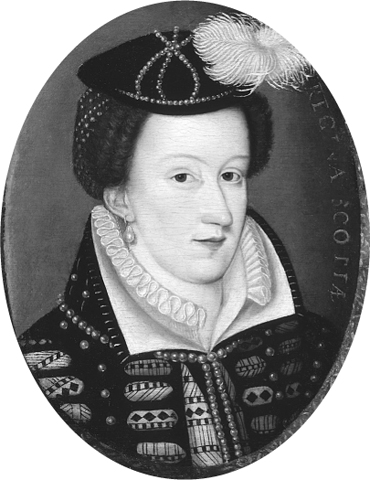
c) Mary, Queen of Scots.

8 James Stewart, half-brother to Mary, Queen of Scots, earl of Moray, and Regent of Scotland: a convinced Protestant who had a stormy friendship with Knox.

9 Knoxs only printed sermon, preached on 19 August 1565 in St Giles Kirk, Edinburgh.

10 Sixteenth-century map of Edinburgh by Braun and Hogenberg c.1582.

11 Lord Deputy Sidney marching out of Dublin Castle with his English troops.
Preface and acknowledgements
J ohn Knox has been a brooding presence throughout my academic life, with his writings featuring in my PhD thesis and a number of early publications. When I moved into other areas of Scottish and British history, he remained lurking in the background. Since his statue dominates the courtyard at New College in the University of Edinburgh where I work, I frequently walk past the wee man in the quad. Assuming that I possessed more than a nodding acquaintance with him, I finally decided to attempt a biography of Knox. He proved to have plenty of surprises up his sleeve, and I discovered that writing in this genre posed a greater challenge than I had anticipated. As well as sharing her deep knowledge of the period, Jenny Wormald has given great encouragement as I wrestled with that challenge. Not least by listening to frequent moans and groans, Linda Frost has kept me going to the end of this book.
Throughout its very long gestation I have benefited immensely from the generosity of a wide range of other people in different contexts. Fellow scholars at all levels have given their time, knowledge and expertise to discuss historical points and answer my questions. I have equally been sustained by the humour, companionship and neighbourliness of many people who probably did not realize how much help they gave. To all I extend my great thanks and, as the list is extremely long, I apologize for not being able to name each individual.
Next page
